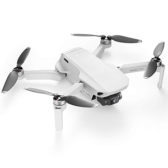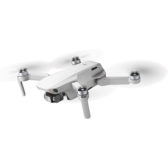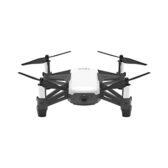Best Drones Under 250 Grams: No FAA Registration Needed!
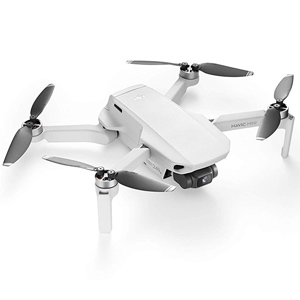
DJI Mavic Mini
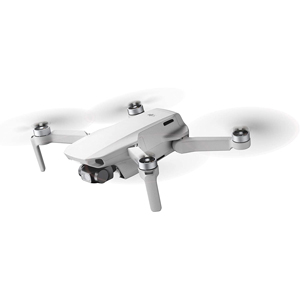
DJI Mini 2
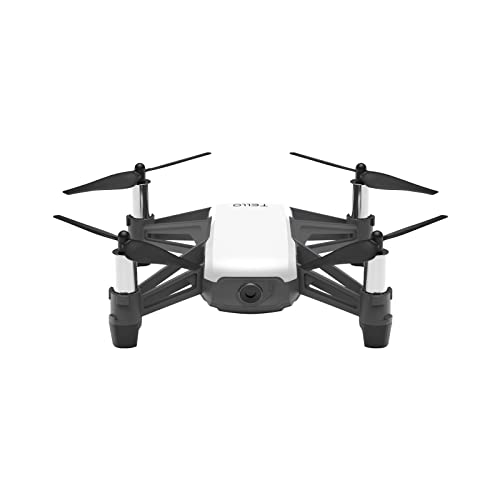
Tello Quadcopter
Although done primarily for public safety, it’s not true that you need to sacrifice all good features if you pick a small, light drone. And picking an extremely lightweight quadcopter can have other benefits outside of safety; portability, for one.
But not only that, by trying to find the best drone under 250 grams you will also be picking up a drone with no FAA registration required.
That’s right: drones under 250 grams do not need to be registered with the Federal Aviation Administration. That means no admin fees, no tests, no stickers, no hassle.
There are a few awesome selections below for the best drone under 0.55 pounds (the same weight as 250g).
For those of you outside the US, it’s worth noting that the FAA’s current limits are aligned with the UK’s CAA registration limits, and they’re also very similar to the laws in Australia, Canada, and most other English-speaking countries.
With miniaturization, it is possible to have certain features found in larger drones inside something that you can fly right out of the box.
Not to mention that filing for registration and keeping your drone compliant to all restrictions can be a little tedious. You don’t want to deal with forms and exams in order to film an entertaining blog or take a few shots from your vacation from the air.
Why is 250g a Significant Weight for Drones?
250g is the minimum weight where drones (plus their owners and pilots) must be registered with the FAA, or the Federal Aviation Administration. Anything drone under 250 grams currently has no registration needed.
FAA registration is meant to keep you responsible for several types of safety.
Primarily, you should take care of people on the ground beneath the drone. And even though every sensible drone pilot will keep safety as a top priority and not do stunts over a crowd of people, some might, and that’s why the rest of us can’t have nice things.
Additionally, heavier drones can damage all sorts of other flying creatures and contraptions, ranging from civilian helicopters to geese.
Small and light drones that don’t require registration can still be a nuisance if they fall or hit a bird, but there is little chance that they will do any permanent damage.
However, the FAA have established limits for a reason, so they must believe that drones below the FAA limit must be safe enough for the general public to be trusted with them.
With that in mind, let’s take a look at the best options you currently have.
We may receive compensation on qualifying purchases via our links. This does not change how we review items. For more information, please read our affiliate disclosure.
What is the Best Drone Under 250 Grams in 2021?
This is one of our top recommended drones on the whole of Dronesvilla — and it just happens to fall right under the 0.55 pound limit.

- Flight Time: ~28 minutes
- Charge Time: ~90 minutes
- Range: 3000m / 9842ft
- Remote Controller: WiFi 5.4GHz & 2.4Ghz (included in the set)
- Camera: 3-axis gimbal 2K Camera with 12MP
- Live Video Transmission Range: 2500m / 8200ft
- Weight: 249g / 8.78oz
- Working Temperature: 0°C ~ 40°C
- Rated for indoor and outdoor use
It is evident that the Mavic Mini is made with the express purpose to provide as many features as possible while staying under the FAA demanded limit. Considering it’s a miniature drone, it’s capabilities are amazing.
This drone strikes the right balance between size and utility, providing much of the same systems as the larger Mavic, but at a lower weight. It has an amazing camera, good battery life, and all of the GPS features that the DJI Fly app can use.
The weight falls right under the recommended limit at 0.53lbs, including the battery.
The Mini is very quick in the turns and can even withstand some heavier winds. The motors work seamlessly with the sensory systems to keep the drone steady and responsive.
Additionally, the Mini has no drawbacks when it comes to its range, both in terms of battery life and controller capabilities. You can fly it around for miles without experiencing any lapses in the system or the FPV transfer to your smartphone.
And all of this found in a drone which is lighter than some modern smartphones.
The design also reminds of the larger Mavic, harboring the same foldable-wing look and a slick finish. The roundness makes the Mini unfit to transport in your pocket, but it will easily fit into any bag or even a purse.
But, the best feature of this miniature drone is the camera. With natural 4K capabilities, it will make beautiful videos and become an essential tool for anyone who likes taking aerial videos to record blogs or any other projects.
+ Pros
- Cons
When it comes to the best drone under 250 grams, the DJI Mini 2 is the favorite for the top position weighting at just 249g.

- This drone weighs less than 250g
- 12MP camera / 4K video, 4x digital zoom
- 3-axis motorized gimbal for image stability
- 10km range, max altitude of 4km
- Battery life: 31 minutes
Despite its miniature design, insignificant weight, and being jam-packed with amazing tech, the second generation of the DJI mini is truly in a league of its own.
The DJI mini 2 is deemed as the perfect entry-level drone for amateurs that are inexperienced and are looking to get into flying, capturing amazing quality birds-eye footage in the most inaccessible places (where permitted).
In terms of capturing quality, the DJI Mini 2 supports 30 FPS 4K capturing at 100 Mbps as compared to the first-gen drone, which was only able to do 30 FPS 4K capturing at 40 Mbps.
On top of that, the DJI Mini 2 has been taken one step further as engineers have developed an up to 4x zooming feature at the amazing 1080p.
+ Pros
- Cons
The partnership between DJI and Ryze has resulted in a brilliant, lightweight and affordable drone — the Tello.

- Flight Time: 10-15 minutes
- Charge Time: 75 minutes
- Range: 100 meters
- Remote Controller: none included; uses a smartphone app for control
- Camera: 5 megapixels at 720p HD resolution
- Weight: 82g
- Rated for indoor and outdoor use
The Tello Quadcopter is a small and agile drone that has plenty of flexibility hiding behind its affordable price. It uses components from drone powerhouse DJI, so you can be confident of the quality of this thing.
Despite the small size, it can stand up pretty well to light gusts of wind when switched to the “fast” setting. For indoor flight, you can opt for the “slow” setting, which affords you better control.
The camera is decent at the price range and shoots 720p HD footage that ain’t so bad. However, don’t expect professional quality; this is really for perfecting your drone photography skills.
It weighs just 80-90g meaning it comes in far below the FAA or CAA registration limits.
+ Pros
- Cons
No products found.
The HS160 Shadow by Holy Stone is the cheapest and most affordable under 250g drone on this list.
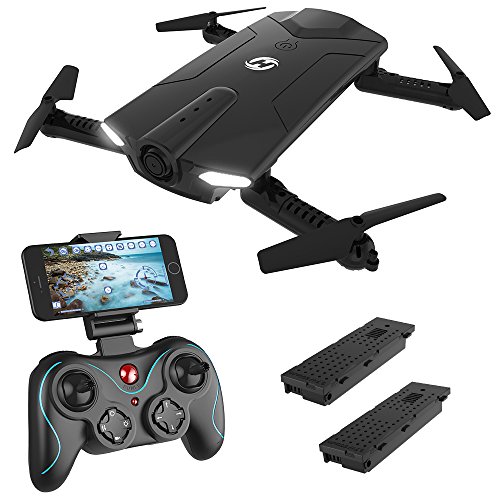
- Flight Time: ~8 minutes
- Charge Time: ~120 minutes
- Range: 70m / 230ft
- Remote Controller: WiFi 5.8GHz / smartphone (included in the set)
- Camera: 720p fixed HS camera
- Live Video Transmission Range: 30m / 100ft
- Weight: 82g / 2.92oz
- Working Temperature: ~-5°C to ~40°C
- Rated for indoor and outdoor use
The HS160 Shadow by Holy Stone was engineered to captivate the attention of a new wave of users with its extremely low price tag for a fully-functional drone.
Designed to weight just 82g, this drone can fly for around 8 minutes at a range of approximately 80m with a live video transmission of 30m.
One great feature is that despite its miniature size, it can operate at temperatures of between -5C all the way to 40C at full capacity.
For its low price point, this drone also features a built-in 720p HS camera, making this drone the perfect entry point for any drone enthusiast.
+ Pros
- Cons
No products found.
At just 242g, with the Passport drone you can enjoy decent flight time, range, and performance.
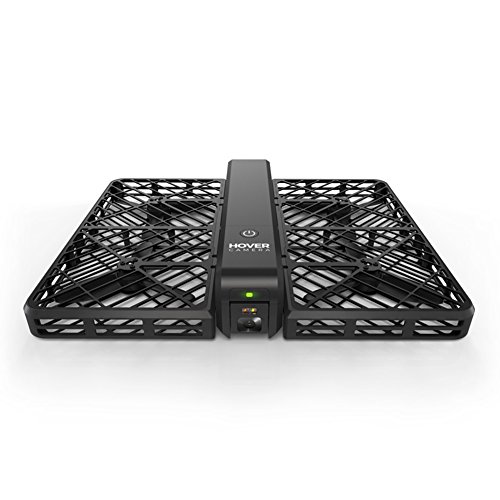
- Flight Time: ~6 minutes
- Charge Time: ~60 minutes
- Range: 30m / 100ft
- Remote Controller: WiFi 5Ghz & 2.4GHz (included in the set)
- Camera: Sensor1/3.06″ (CMOS); Effective pixels: 13M
- Live Video Transmission Range: 20m / 65ft
- Weight: 242g / 8.53oz
- Working Temperature: ~5°C to ~35°C
- Rated for indoor and outdoor use
The Passport is made to focus on your face and to be predominantly a selfie drone. It is easily portable in a pocket and can be made to fly in a meter of seconds, even without a controller.
While marginally thicker than a smartphone, it will fit anywhere your 6′ phone will. No complicated pairing is needed, and the drone can be flown with gestures alone.
In the center, there is a 4K capable camera that floats inside the casing, giving a lot more stability than regular devices. Additionally, you can reduce the resolution to 2K and receive a lot of software-induced stability from the AI.
As far as flying goes, this drone is specialized to remember and follow faces from a relatively short distance. Unlike most other drones, it will position itself depending on the face, and not the controller or smartphone.
With its ease of flying and intuitive controls, as well as a top-notch camera, this drone fulfills its purpose and will record any party, event, or wardrobe testing.
+ Pros
- Cons
No products found.
Weighting just 145g, the HS200 by Holy Stone is the perfect drone for indoor usage.
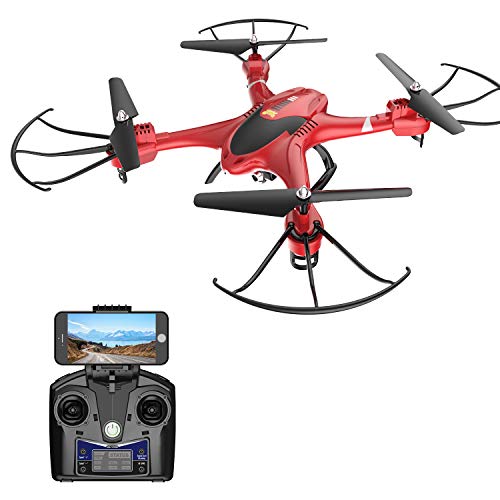
- Flight Time: 9 minutes
- Range: 100m
- Camera: 720p HD camera with 120-degree FOV
- Battery: 1,000 mAh LiPo
- Weight: 145g
There is a good reason why Holy Stone became such a big name in drone manufacturing. They have made a habit to cleverly select features and materials that will optimize between the price, weight, and utility.
The HS200 is a light drone that emphasizes stability and cruising over anything else. It is not as agile as some other models but instead focuses on giving you a calm and relaxing drone flying experience.
The wide span between the blades makes the drone glide gently through the air. Additionally, the tactile feel of the controller with your smartphone doubling as an FPV screen makes the flight comfortable and more than enjoyable.
While the camera is only 720p, which is currently quite common in drones, the added stability makes for some amazing and bright videos and photos. Maybe not something you would look for on a professional level, but more than enough for Instagram.
Finally, this drone has a lot of interior features that will assist you in your first tries when flying. The internal gyro and altimeter work seamlessly and cover most of the mistakes we tend to make as novice drone pilots.
+ Pros
- Cons
No products found.
The Flying Phone Case is the most lightweight drone on this list. Despite this, it is jam-packed with amazing performance-enhancing features.
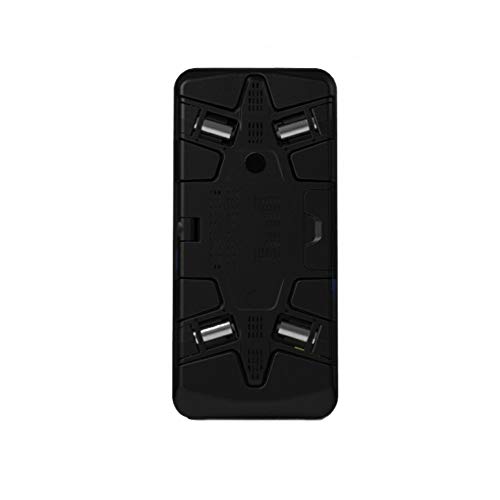
- Flight Time: ~5 minutes
- Charge Time: ~60 minutes
- Range: 12m / 40ft
- Remote Controller: 2.4 GHz WiFi 1st Pilot view Transmission / smartphone
- Camera: 70° axis gimbal 720p camera with 5MP
- Live Video Transmission Range: 12m / 40ft
- Weight: 68g / 2.39oz
- Working Temperature: ~5°C to ~+35°C
- Rated for indoor and outdoor use
With this little drone, you won’t only go under the radar of the FAA, but of most people seeing it when stored, sometimes even including yourself.
The ‘phone case camera’ is not a reference to the size but rather an accurate description of what this product is. It is a drone that fits inside your phone case. Here you can keep it in your pocket as long as you want.
The casing, for both your phone and the drone, is only 9mm thick, making it even thinner than those holding external batteries. And it comes with different cases so that you can pick one depending on your phone.
And for such a small drone, it really has a lot of features. It can take photos and videos in 720p and be controlled entirely by the UI on your smartphone.
Blades used on the PCC are quite small, and there is little chance that the drone will fly in windy conditions. But the size also means that you can fly the drone indoors, making it a perfect option for snapping selfies at a party.
The manufacturer really knows their audience, as everything on the app suggests that it is used for sharing all of the pictures and videos you have taken directly to your social media accounts.
+ Pros
- Cons
Quick Buyer’s Guide
Even though the weight line for FAA registration is very clear and straightforward, this alone will not tell you a lot about the drone itself.
Different components and systems come at a varying density and could be fairly small and yet breach the line. Others, like the wings of the drone, can be quite large while staying lightweight.
Depending on the systems you need, you will sacrifice other features. And if you know specific feature’s weight class, you can make your own list before you even start browsing.
Once you know the feature you are out for, it will be easy to select the best drone for you, without any fear of passing the required threshold.
How to Find Drones Under 250 Grams / 0.55 Pounds
Lighter and smaller drones are neither new nor rare. What is relatively hard to find are good and useful quadcopters under 250 grams.
When going through the list above, make a reference of what you want to see in a drone. Maybe you are out for a good camera setup, and maybe you just want to have some fun.
There is no bad option as every drone from the list will be good for something. The only issue is if that feature brings you personal value or is not important in your case.
In some cases, you might find drones that have everything you need, and that will be the best choice. In most cases, one feature will be better than the other, making you weigh your wishes and options.
Why is the Registration Required?
Liability.
Obviously, hitting a random stranger on the head with 0.55lbs on purpose may still lead to a lawsuit, but it will not do any lasting damage where the authorities will need to find you.
Regardless of the standard, breaking the law is still against the law, as much as water is wet.
But, with a heavier drone, there is more chance to do more harm to both land-based and aerial inhabitants. You will be responsible for anything that is done with the drone, which can be easily traced back to you.
This will also keep the administration informed about any lost drones or those that have been a part of any scruff.
Global Standards and Registration
While your registration with the FAA will not be valid anywhere outside the United States, most other countries have a similar weight threshold when it comes to needing to register the drone.
The EU has its own agency, meaning that you will need a single paper if you want to fly your drone in either Germany or France.
Russia also has its version of the FAA, called the RFCAA, which has the same rules for registration. Rules for flying any drone are slightly stricter in the Russian Federation but fall into similar guidelines as in the US.
Safety Issues
There are three types of safety that you will need to take care of when flying a drone.
Primarily, there is your physical safety. Make sure that everything you are using is properly attached, that the batteries are not leaking, and that no parts are missing.
Start your flying slowly while you get comfortable with the commands. You can always buy a new drone, but a new pair of eyes is quite hard to come by.
Once you know you are safe, take care of the safety of others. Don’t fly quickly in highly populated areas or over a lot of people and don’t buzz near other people’s houses with a camera drone. Respect the safety and privacy of others.
Finally, there is your legal safety.
Accidents may happen, but if you can prove that you have done everything in your power to keep everyone safe, you are much more likely to limit any consequences of those accidents.
Better Deal with Administration than the Courts
Always keep in mind if your drone is under the limit with or without the battery.
Some manufacturers don’t always disclose the full weight with the required batter to trick people into buying their drones. While this practice is rare with reputable drone makers, it is very common if you are carelessly browsing the online markets.
But, if you find out that you really like your drone and don’t want to buy a new one, don’t despair. Filing a registration is not that big of a deal, and definitely better than dealing with any liability and damages later.
Practice Situational Awareness
This piece of advice is as useful in general as it is when piloting a drone.
Always take a note where your drone is positioned and what you might encounter when flying. This is both regarding the range and the location where you are piloting.
Additionally, some buildings and geographic features may disturb your range and the responsiveness of the controls. It is always better to stay on the safe side if there is any chance of harm.
Finally, consider the weather conditions where you are flying. It might not be that windy on the ground, but it will become so the further you go up. Don’t let your mini drone fly off into the unknown, possibly hurting someone when it falls.
Weight vs. Compactness
While light drones will always be comparatively smaller than those very heavy drones, they don’t always need to be compact.
With the innovations made when it comes to materials, you may find a fairly large drone made from carbon fiber that is still under the FAA required limit. Similarly, a small metal drone might be heavier.
Most drones in this class will fit in your hand, but there are too many exceptions to list. This is why you should always check the cited weight and not trust your instinct.
The chassis is not very heavy, making drones with fixed wings take in more space.
A wider separation between wings will often make a lighter drone faster and more stable. But, if transportation is an issue, something with foldable wings and a slick design will always be a better choice.
What Features to Look for
When it comes to smaller and lighter drones, there are no features that are impossible to ask for. Rather, it becomes impossible for some features to become useful to their full extent, as is the case on larger and heavier models.
Some options, like payload-carrying, can only go for a couple of grams, making your drone basically a plastic carrier pigeon with a lower range. For most purposes, this will simply not be enough.
Additionally, the speed these drones can reach is not as amazing as when drones have larger blades and bigger motors. Air is always the same density and can’t be invented to work differently.
This also means that lighter drones fair worse in stronger winds, especially when you go really high where the air starts to become thinner.
On the flip side, smaller and lighter drones are more durable when it comes to falls. The material is compact by default, and there is less material to gather gravitational velocity.
For some purposes, like using a stunt drone, it is actually better to go smaller and lighter than to add weight and features to the device.
Go Specific
Light drones can have only a few defining features and systems that will work on the high-end level. Some of the best drones that don’t require FAA registration will have all of the basics covered but might lack some gimmicks available on their larger cousins.
If you are specific and know exactly what you want, you may easily pick out a good drone for a reasonable price without sacrificing any aspect you care about.
But, if you plan to have everything and anything you might end up disappointed, as some options will be prevented by physics alone as much as current technology.
Design
When it comes to design, the biggest question is if you want to go with a large chassis and wide wings or with something more compact.
The tradeoff is between speed and stability or additional features.
Even though the body might not make as big of a difference as it seems, in larger drones that don’t require FAA registration, it will still make more of the total weight.
This will make the blades bigger and the drone stronger, but won’t have enough weight to fit in other heavy systems like GPS navigation or a strong camera.
Similarly, if you want a compact drone, you might not get the stability of large blades but can then get a better camera and maybe some additional systems installed inside.
Camera
The heaviest part of a modern camera is the lens, with bigger almost always meaning better.
But, that doesn’t always need to mean that a small lens will have a bad picture, or a bad video, as a lot comes from post-processing today. There is more than enough weight allowance for the drone to house a camera comparable to a smartphone.
Having 2K or 4K video capability is not out of the question, and the picture will end up crisp and bright.
When focusing on the camera, make sure that you select a drone that is also stable and has autonomous features. These aspects usually assist the image quality as much as the CMOS chip size.
Motors
Even without a lot in the size department, brushless motors on a light drone can be fairly powerful. Even without large blades, they can push the drone very quickly through the air.
When looking for strength, make sure that you don’t only search for the maximum capacity of the motor, but for the energy efficiency as well.
Stronger motors will require larger batteries to fly longer, and that battery will add a lot to the weight. Striking the right balance between strength and battery life will be key to finding the best drone to fit your needs.
Sensors and AI
Especially when it comes to novice drone pilots, having a good AI can improve your flying capabilities a lot.
One of the best types of sensors to look for is the GPS, as it will provide you with a full set of options rarely found with other tools. A gyro and an altimeter are also good choices but are rarely as precise as the GPS.
The internal AI can function entirely inside the drone or when connected to a smartphone, which will reduce the weight demand.
If the manufacturer has a good app and good smartphone connectivity, this feature can become a cornerstone of an excellent drone.
Always Keep it Fun
Regardless of your pick and the purpose it was meant for, your drone piloting experience should always remain fun.
Flying is exciting, and it is one of the primary fantasies of humans. Embodying that inside the drone, especially in FPV mode, is one of the closest ways we could reach that fantasy for now.
Make sure that the features inside the drone you select will entertain and excite you. This will push you to try new things and advance even further.
Conclusion
Regulations imposed by the Federal Aviation Administration are not bad on their own, and they do keep the skies above as somewhat regulated. But, that doesn’t mean that they are not annoying.
Sometimes you want simply to fly a drone without needing to file papers and wait in lines.
Thankfully there are some very good options when it comes to drones that don’t require FAA registration, and they can fulfill most if not all of the same functions of their larger counterparts.
If you focus on the specific features that you need and decide on the design you prefer, you will quickly find just the right drone for you that you will be able to fly right out of the box.

